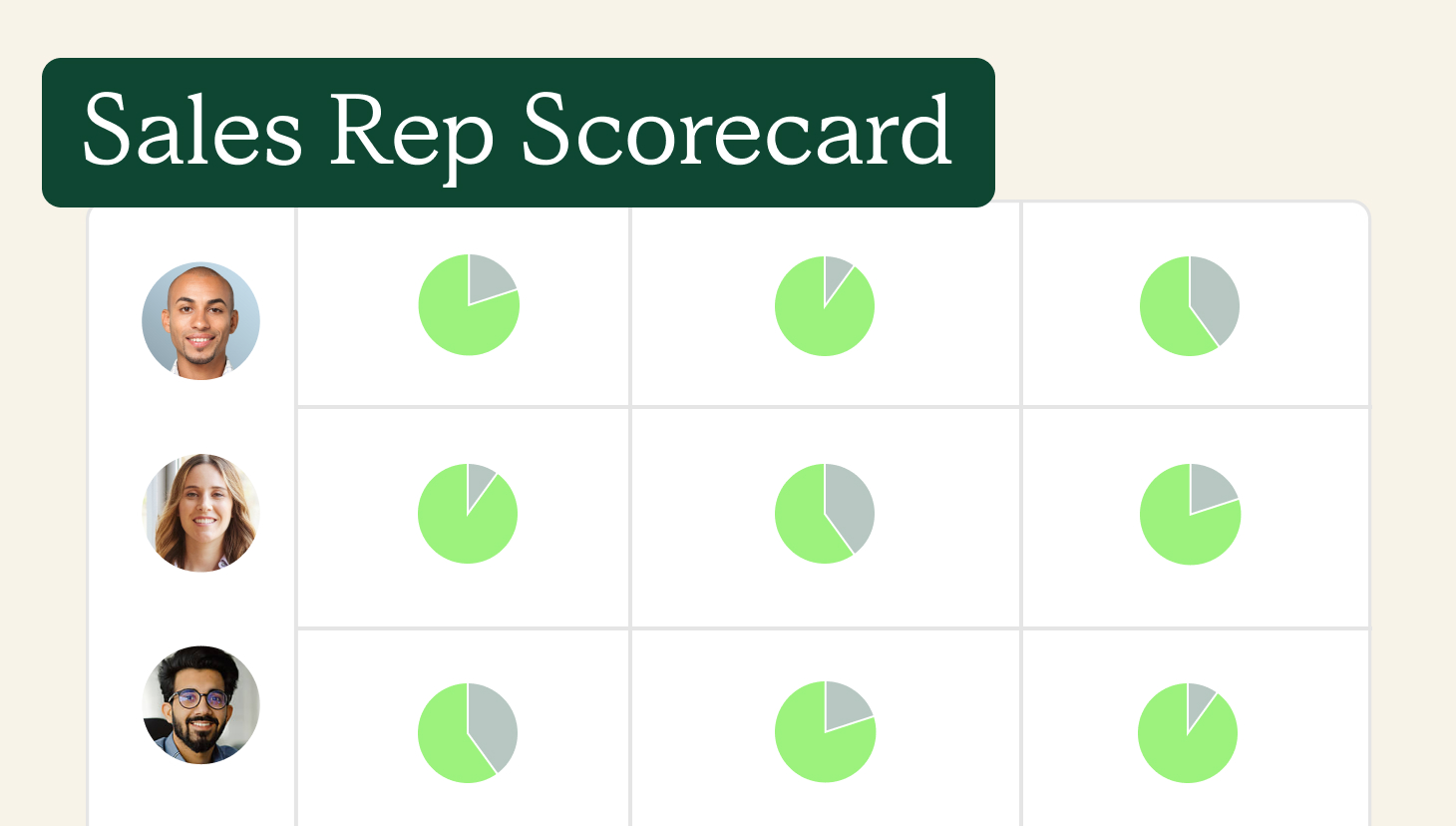The following blog shares four steps to increasing sales compensation equity at your organization.
Sales expert and advocate for women in sales Lori Richardson has nearly 30 years of experience working in tech sales.
The Founder of WOMEN Sales Pros, Harvard Business School Sales Coach, and Growth Strategist for Score More Sales, is a prolific leader in the space and has had a storied career. And, like other women leaders in sales, she’s also learned first-hand the pay discrepancies between men and women particularly in sales.
“Some people are just flat-out paid differently,” Lori said. “That happened to me. I found that my male counterparts were paid more, even though they had no more experience than me.”
Lori’s experience dates back to her years climbing the sales leadership ladder more than two decades ago. Yet 2023 data confirms this remains a prominent issue in sales.
What is compensation equity and how does it apply to sales?
Compensation equity is the principle that employees should be paid fairly for their work, regardless of factors such as gender, race, age, or experience. This means that employees who perform the same job should be paid the same salary, regardless of their personal characteristics.
In Sales, that means reps with the same title share a compensation structure and have the same chance at success.
A recent report found that women earned 23% less in commission and salary than men. What’s more, men made nearly double the amount of commissions as women per sale according to their data. Analysts cited biases, differences in negotiation successes, and lack of growth opportunities as the leading reasons for these numbers.
We’ve also seen the number of comp plans within a sales organization lead to pay discrepancies for women and people of color.
“If you have different compensation plans for people in the same role with the same title, on average, you end up paying women and people of color less,” said QuotaPath Chief of Staff Graham Collins.
Inequitable territories also threaten fair earnings potential.
This occurs when sales territories fail to evenly balance sales potential or opportunities across the team, making it harder for the reps in those territories to achieve their full on-target earnings (OTE).
Try QuotaPath for 30-days
Try the most collaborative solution to manage, track and payout variable compensation. Calculate commissions and pay your team accurately, and on time.
Try for FreeThe same can be said for poor account scoring models that send the highest-ranked leads (the accounts most likely to close) to top performers.
When you have inequitable lead distribution plus discrepancies across sales compensation plans, you create an environment at-risk of inequity. And when that happens, no one wins. It’s unfair to your employees. It’s bad for business.
Your employees should be paid fairly, equally, and competitively. Not only because it’s the right thing to do, but because when you have compensation equity, you’re more likely to attract and retain top talent while improving morale and productivity amongst your team.
“By ensuring employees are paid equitably, employers can increase efficiency, creativity, and productivity by helping to attract the best employees, reduce turnover and increase commitment to the organization,” said Cheryl Pinarchick, an attorney with Fisher Phillips in Boston (The Importance of Pay Equity).
So, how can you as a business leader ensure your sales function operates under equitable circumstances?
You can start by standardizing your compensation structures and ensuring your account scoring models and territory designs are set up to give your reps the same chance at success. We also suggest being open and upfront about your compensation packages with job candidates.
Below, we explore ways in which you can increase sales compensation equity.
How to build sales compensation equity into your plans
The first principle of building an equitable sales compensation plan is to standardize it. Make sure that every person with the same role follows the same comp plan.
“At QuotaPath, we have an Account Executive, an Account Executive II, and a Senior Account Executive role,” said Sr. Director of RevOps Ryan Milligan.
He explained that each rep with the same title shares the same variable and base. When they earn a promotion to AE II or Senior AE, their base and variable pay increases.
“That should be public, and every rep should know and understand the varying levels of OTE for positions within the org.,” said Ryan.
Next, your sales compensation plan should follow our three comp plan pillars.
Every structure should be simple, fair, and logical. That means that reps understand how and when they earn commissions. If you can’t explain in less than 30 seconds or write it on a napkin, your reps won’t be able to either.
Calculate OTE:Quota ratios
Use this free calculator to ensure your reps’ on-target earnings and quotas mirror what they’re bringing in for the business.
Try it NowCreate compensation equity via fair territories and OTEs
For fairness, every rep should have the same shot at reaching their OTE. That means equally distributed territories.
“Start by implementing round-robin lead distribution,” Ryan said.
This will ensure reps inherit opportunities in an order one at a time, rotating as they come in. By doing so, opportunities spread out evenly across your team which fosters compensation equity.
Additionally, your OTEs should actually be attainable. If your OTEs are unrealistic, you’ll lose your top performers quickly. To get a gauge on the health of your quota to OTE ratio, use our free OTE calculator.
The last pillar, logical, ties more to your business strategy. Comp plans should follow your company’s targets and not the other way around.
Align your structures to your financial goals so that reps put their efforts behind what matters most. If the key metric is net revenue retention, set up your comps plans so that your sales reps pursue accounts that are most likely to renew and see value in your solution — aka your ideal customer profile. This helps to spread compensation equity because you’ll steer all of your reps toward similar accounts with the greatest chances of closing.
Ensure your account scoring model is equitable
Another way to create equity across your team is through your account scoring model. Similar to our suggestion of a round-robin demo distribution, accounts with the highest scores should also distribute evenly across your team.
In order to stay on top of this, you have to commit to tracking where accounts go.
“I think the most important part about looking into the validity of your account scoring model is to accurately track account distribution across your team,” said Gradient Works Head of Growth Lily Youn Jaroszewski.
Doing so will help you avoid sending top accounts only to your top performers, and visa versa, which can frustrate reps, skew data, and mess with your team’s chances of success.
Be open with candidates regarding your compensation policy
Lastly, you can make sales compensation more equitable by being open and transparent with job seekers about your compensation policies.
“The hiring company should provide the salary range and on-target earnings estimate first,” said Heather Foidart, Business Owner and Sales Coach.
Fortunately, we’ve seen an increase in companies sharing OTE, base pay, and even quota targets and sales activities within the actual job descriptions.
This is good practice so that candidates are clear upfront on expectations. It also ensures that employers don’t pay sales candidates less if they find out the candidate’s salary requirements are lower than what the company had in mind.
Plus, leaders agree that it’s a red flag when an organization isn’t upfront about variable compensation packages and performance metrics.
“An employer should always be able to share the breakdown of the variable compensation plan,” said Heather. “Know the metrics: Average deal size, time to close, ramp time, win rates, % of the team hitting quota, etc. If a company has a “story” behind why they don’t have these metrics, it’s a red flag.”
An equitable sales compensation plan should be:
Simple. The plan has to be easy to understand, otherwise, you won’t get the behavior you’re trying to encourage.
Fair. It has to be attainable and people have to feel like they can make money off it.
Logical. Comp plans should follow your company’s strategy, not the other way around.
Create Compensation Plans with confidence
RevOps, sales leaders, and finance teams use our free tool to ensure reps’ on-target earnings and quotas line up with industry standards. Customize plans with accelerators, bonuses, and more, by adjusting 9 variables.
Build a Comp PlanSales compensation plan best practices
We close with six additional best practices to build equitable sales compensation strategies:
Use a performance-based plan. A performance-based plan rewards employees based on their sales results. This type of plan is generally considered to be the most equitable, as it rewards employees for their hard work and results.
Set clear goals and expectations. Employees should know what they need to do optimize their earnings and what it will take to get their next promotion. Make sure your sales compensation plans and career ladders are clear, easy to understand, and accessible for your reps.
Use a variety of metrics. Don’t just focus on sales volume. Consider other factors such as customer satisfaction, new accounts, and repeat business.
Regularly review your plan. Revie your sales compensation plan on a regular basis to ensure that it is still fair and equitable.
Consider using a third-party consultant to help you create your sales compensation plan. A consultant, or partner like QuotaPath, can help you to ensure that your plan is fair and equitable and that it meets the specific needs of your business.
Get feedback from your employees. Once you have created your sales compensation plan, collect feedback from your reps. Ask them if they think it is fair and equitable.
For additional compensation plan resources, visit Compensation Hub . This library of comp plan templates allows you to adjust, customize, and model for your business.
And, to extend compensation transparency across your organization, automate sales compensation management with QuotaPath. Sign up for a free 30-day trial or schedule time with our team to learn more.



